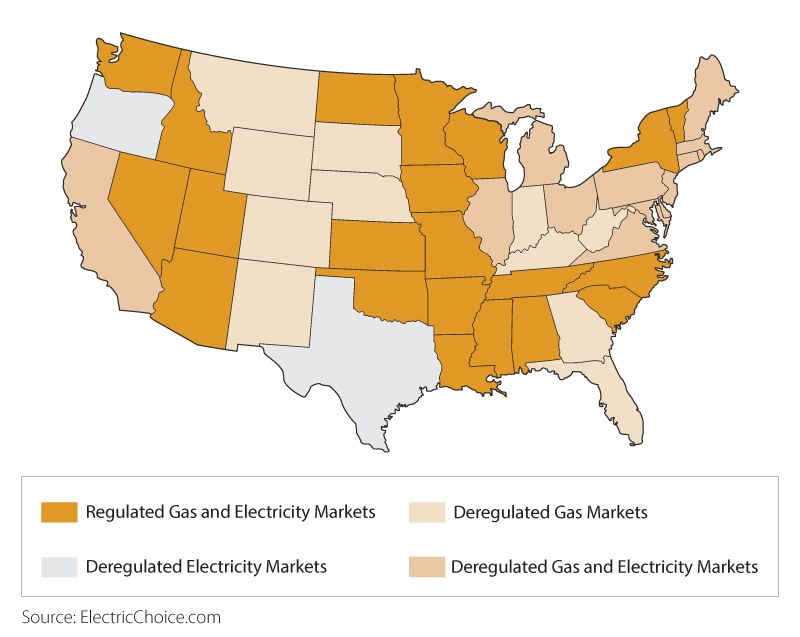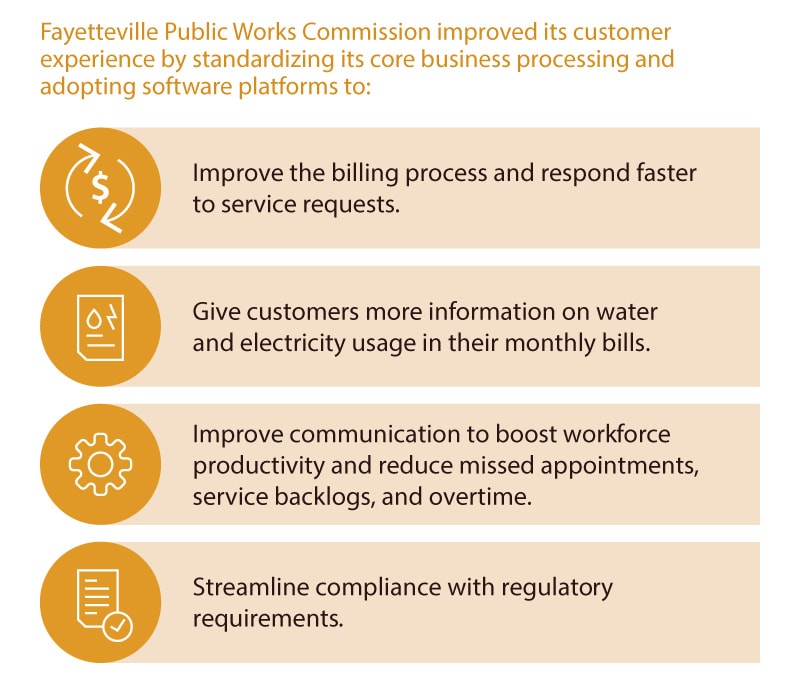When was the last time you thought about your power company? Probably when the lights went out and you were left in the dark. Millions of customers rely on their utility company, but only think of it when there is an outage, a bill that’s due or a change in service. As a result, utility companies have fallen behind in digital customer experience and engagement compared with retail and financial services.
Utilities need to address several challenges to implement a successful customer experience program. They have limited data on each customer and usually interact with them for specific transactions. Plus, data and insights given to the customer can result in reduced consumption, which makes it hard for a utility to justify the expense.
A recent Infosys research study found that while 79 percent of utilities believed they were customer-centric, only 7 percent of customers agreed.
Digital improvements transform customer experience
Digital channels have the potential to reach customers with personalized messages and two-way conversations at a fraction of the cost. Digital channels are more than a website and emails; utility interaction with customers can range from social media to messaging, chats and more.
Utility companies are grounded in the communities they serve. The entire workforce lives in the community and the service goes into people’s homes. Utilities tend to be very conscious about the impact they have in their community. Digital channels are a way to amplify those community interactions. There’s a lot of value in blending digital channels with community interaction. Utility companies can use digital channels to amplify the good work they do in the community. This is an opportunity that’s often missed by just thinking digitally.
Digital customer experience transformation is based on two fundamental design principles:
- Industrialize for efficiency, agility, safety and resilience.
- Digitize to connect with the customer, grid and workforce.
Market deregulation
As more utility markets become deregulated many consumers now have a choice. All 28 countries in the European Union have deregulated energy markets. 12 European countries outside of the EU are also deregulated. In the United States, the map below shows the deregulated electric and gas markets. No state has an energy market that is completely deregulated. Texas comes the closest. Approximately 85 percent of Texans can choose their own energy provider.
Figure 1: Deregulation of US utilities by state

Advanced analytics give customers and employees more information
Investing in customer analytics can bring insights into energy consumption and other behaviors. These insights can be used to improve service. Advanced analytic technologies help utility companies unify isolated data and gain a 360-degree understanding of customers. This understanding can be used to better serve them.
Predictive analytics help utility companies anticipate changing customer needs and even identify customers who are likely to leave.

FPWC used analytics to measure and drive the components of this transformation. Customer analytics were used to combine some service transactions so consumers won’t have to make multiple calls. Educating customers about the services and account options the first time they call allows customers to make the best choices.
Meet millennial expectations with omnichannel customer engagement
Utility companies must move beyond the call center-only model. Customers want to be able to engage on a variety of channels. In addition to calling, customers should be able to text, chat online, and use social media and a mobile app — even simultaneously.
Too many utility companies still have an outdated, call center-only service channel strategy. More progressive companies are upgrading to omnichannel engagement. They prioritize the launch of new offerings on digital channels and use social media and direct messaging for communication and support. Digital channels can be used to answer routine questions, while call center operators take on a new role as energy advisers. They can answer complex questions, such as whether to switch to solar energy. Utility companies are seeing a significant change in consumers, who now pay more attention to their energy choices.
As millennials and beyond grow up and lead households, it’s vital that utility companies gear up to meet their heightened expectations. Utility companies can meet millennials’ expectations for digital engagement and empowerment by providing an omnichannel experience. Not only does this meet millennial expectations, it also costs the utility company less. The younger generation expects the same type of interactions with utilities that they have with other providers.
The utility industry can start building advanced analytics and artificial intelligence in self-service functions through chatbots and smart assistants.
This will not only improve customer service, but also help operational efficiency.
Automation helps customers, employees and the bottom line
Intelligent automation cuts across all parts of the utility’s value chain. It can be applied to customer service operations, information technology, billing, back-office operations, corporate shared services, transmission and distribution operations, energy supply and plant operations.
Intelligent automation can quickly adapt to the industry-specific needs of utilities. Each implementation can be tailored to meet regulatory needs and infrastructure. Automation can be used to make existing operations more efficient.
Arizona Public Service is a 130-year old utility company, but that hasn’t stopped it from evolving. APS is an example of the difference that technology can make for the customer experience and the company as a whole. APS invested in information technology systems, GIS mapping and technology on the ground. The utility’s distribution operations center is a state-of-the-art facility monitoring the distribution grid down to the feeder level in real time. This allows APS to track and respond to outages more efficiently, and it improves the quality of service.
By automating testing, APS saves 7,600 person hours annually, completes regression testing and documentation in 20 percent of the time it used to take manually, and anticipates cost savings of over $4 million per year. APS began its business transformation program in 2015 and went live with its new customer care and billing operating model in 2017.
In fact, Infosys has served multiple utility companies in the Midwest and California that use automation across a spectrum of areas. This includes exception handling for move-in and move-out customer service requests; billing exceptions and payment inquiries; credit analysis to determine and process customer disconnections and bulk field-order creation to master data management performance.
Internet of things: better bills and fewer outages
Along with customer service, utility companies must focus on the quality and reliability of the service they’re providing. A combined focus on superior customer service and consumer needs will help utilities reach their full growth potential. For instance, the internet of things helps utility companies and customers manage demand and repairs. Utility companies can combine smart meters with sensors across infrastructure, cognitive computing and analytics. Smart meters can send out a ‘last gasp signal’, automatically notifying the utility company of a power outage. Quickly repairing outages and restoring service can only improve customer satisfaction.
Combining blockchain, or distributed ledger, technology to the internet of things could radically improve the billing process. Smart meters send readings periodically, which allows utilities to use real-time pricing, dynamic billing and other
demand response programs. This also gives customers near-real-time usage details and the flexibility to choose cost-effective rate options. Removing the element of surprise from a high bill can only improve customer satisfaction.
Smart meters integrated with home area networks give customers more control over their energy use. The meter triggers the smart contract to generate an accurate electricity bill. Other marketplace services can access some of the information to provide better services to customers.
Ninety million smart meters are projected to be in use in the U.S. by 2020. Southern California Edison has already installed 5.3 million smart meters. They allow customers with communicating, energy-smart thermostats and appliances to automatically respond during critical peak pricing and grid reliability events. SCE says its smart meters reduce the overall peak power consumption by an estimated 1,000 megawatts — that’s the entire output of a major power plant. SCE’s smart meters can also “talk” through home area networks and provide customers with near-real time energy use and cost information to enable energy conservation.
Infosys engineering labs have researched Industry 4.0 and applications for utilities. The findings and reference models indicate significant opportunity in the area of condition-based monitoring, predictive maintenance, factory visibility, energy optimization, and service and supply chain efficiency.
Strong data management and analytics from the internet of things can be used for load forecasting.
Some of the major distributors plan to build internet of things platforms for capturing load consumption information. Internet of things platforms help with load management by switching between different sources based on optimal consumption and commercial transaction rates.
Asset monitoring and advanced maintenance are other internet of things platform opportunities. They connect to existing systems and create a decision guidance system that determines whether assets require an upgrade, repair or replacement.
Now, machines can communicate and collaborate with each other without human intervention.
This solution can create field service requests and is intelligent enough to request the nearest available field team for repairs. The scheduled job information quickly flows to the nearest field team on their mobile devices. Once the task is done, the information flows back to the application and the field request is closed. Complete automation of data collection and data analysis makes completing maintenance requests painless. Eventually this will increase the machines’ uptime and create less downtime for customers. Fewer outages caused by maintenance repairs mean happier customers. This approach also increases the overall plant efficiency and customer order fulfillment capability.
Now is the time to change
“Good enough” customer service is not enough anymore. Over the years, utilities just had to keep the lights on and the prices low. Now is the time for utility companies to use digital solutions to improve customer service while lowering operational costs. Transforming operations with digital technology can create substantial value for customers and the utility company.
Intelligent automation makes existing operations more efficient.
By saving employee hours, intelligent automation saves millions of dollars. The internet of things streamlines the repair process, increasing customer satisfaction and overall plant efficiency. Smart meters generate accurate bills without the need for an employee to read them. Those accurate bills reduce customer complaints. Advanced analytics boost profitability while providing a more complete picture of the customer. An omnichannel strategy engages customers and answers routine questions, freeing up call center operators to answer complex questions. All these digital opportunities build a foundation to better serve the customer, with the added benefit of cost savings for the utility company.





